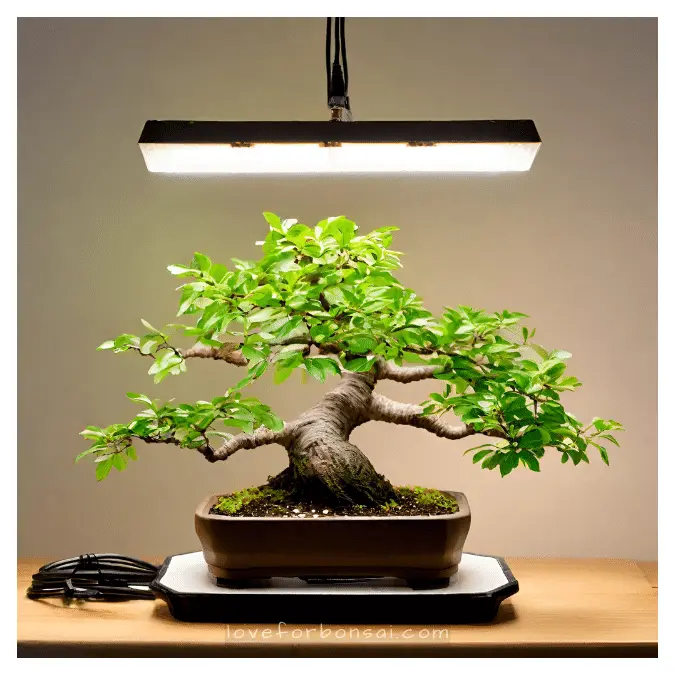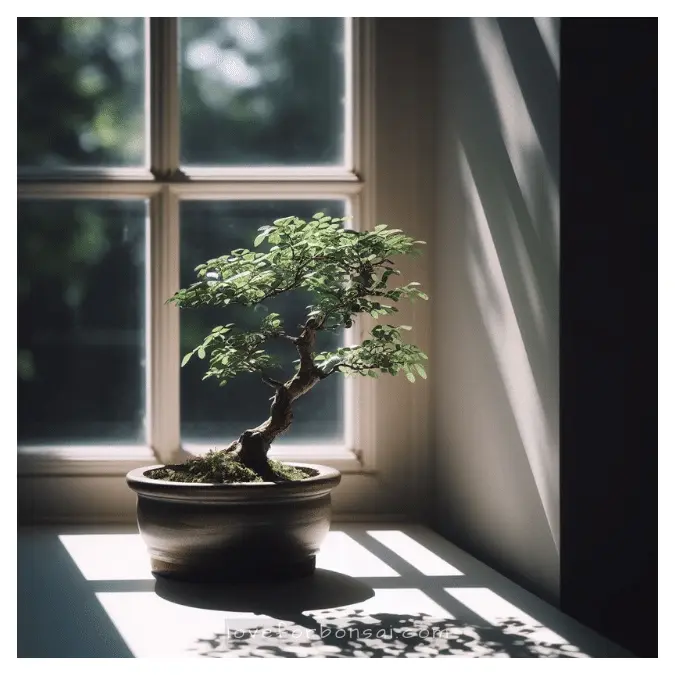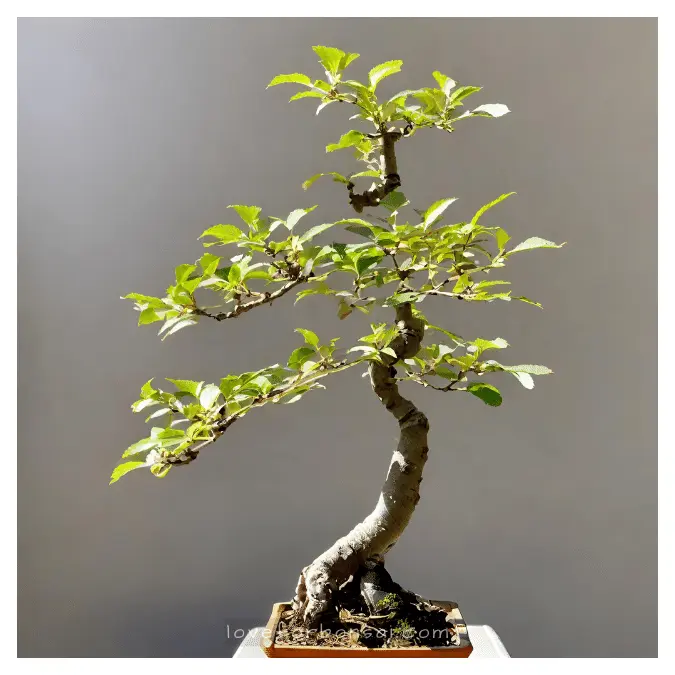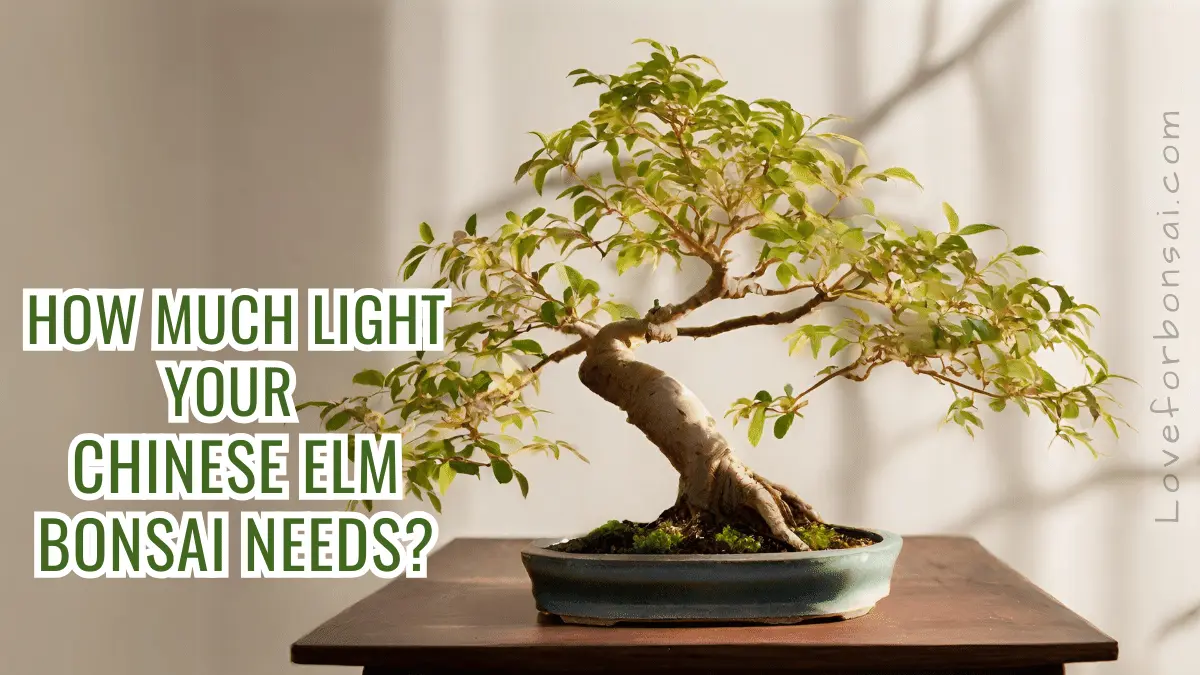Do you notice your Chinese elm bonsai developing long, spindly growth, smaller leaves, or struggling to thrive? Your tree may be desperately signaling that it needs more light. Proper lighting is imperative to the health and development of a Chinese elm bonsai.
After 15 years of growing these delicate trees, I’ve seen firsthand how low light stunts their growth and washes out their beautiful colors.
The good news is with some simple adjustments to provide brighter, more direct light, you can reinvigorate your lackluster elm. Keep reading to learn my techniques to give your bonsai the illumination it’s craving.
Chinese Elm Bonsai Tree Care: A Simple Step-by-Step Guide
Understanding Light for Bonsai
Before delving into the specific light requirements for Chinese Elm Bonsai, let’s briefly understand the role of light in a bonsai tree’s life. Light is the energy source that powers the process of photosynthesis, which is vital for a plant’s growth. Photosynthesis is how a plant converts light energy into sugars and other essential compounds necessary for its survival.
Different bonsai species have varying light requirements, and understanding these requirements is crucial for their well-being. Inadequate or excessive light can lead to various problems, such as stunted growth, weak foliage, or even the death of the bonsai tree.
Chinese Elm Bonsai Light Needs

The Chinese Elm Bonsai, known for its graceful, deciduous leaves and distinctive bark, has specific light requirements that you need to be aware of to keep it healthy and thriving. Let’s break down these requirements step by step.
1. Sunlight Exposure
Chinese Elm Bonsai trees thrive in bright, indirect sunlight. They are not suited for growing indoors all year round because they require a significant amount of natural light to flourish.
If you are keeping your Chinese Elm Bonsai indoors, place it near a south or west-facing window where it can receive ample sunlight throughout the day.
If you’re growing it outdoors, choose a location with filtered sunlight or partial shade, as they don’t tolerate intense, direct sunlight for extended periods.
2. Morning Sun, Afternoon Shade
In regions with hot summers, it’s important to provide morning sunlight and afternoon shade to protect your Chinese Elm Bonsai from scorching heat.
You can achieve this by placing the bonsai where it receives direct morning sun and is shaded during the intense afternoon sun. This balance helps prevent sunburn and excessive moisture loss through transpiration.
3. Seasonal Adjustments
As seasons change, so do the light conditions. During the spring and summer months, your Chinese Elm Bonsai will require more sunlight for robust growth.
However, as fall approaches, gradually reduce the exposure to direct sunlight. In winter, when the tree goes dormant, it needs even less light.
Be attentive to these seasonal adjustments to ensure your bonsai’s well-being throughout the year.
4. Artificial Lighting
In some cases, natural light may not be sufficient, especially if you live in an area with limited sunlight or harsh weather conditions. In such situations, you can use artificial lighting, such as an LED grow light like this, to supplement the bonsai’s light requirements.
Place the lights above the bonsai at a distance that provides the equivalent of indirect sunlight.
5. Rotate Your Bonsai
To ensure even growth and avoid your Chinese Elm Bonsai leaning towards the light source, regularly rotate it. This simple step ensures that all parts of the tree receive adequate light, promoting balanced development.
Can I Keep The Chinese Elm Bonsai Indoor?

Yes, Chinese Elm Bonsai trees can be kept indoors, but they generally thrive better when they are placed outdoors for most of the year. Chinese Elm Bonsai trees prefer full sun and/or partial shade. In temperate climates, they can be left outdoors even during the winter months.
If you have an indoor Chinese Elm Bonsai, you can place it outside during the summer to benefit from natural sunlight. However, during the winter, bring it indoors in a cool, frost-free room.
The Chinese Elm can tolerate some frost, but its ability to do so may vary depending on the region it was imported from. Trees from northern Chinese regions are generally more frost-hardy than those from southern areas.
It’s important to note that when kept indoors, Chinese Elm Bonsai trees may require additional care to ensure they receive adequate light and humidity. Indoor bonsai enthusiasts often use grow lights to supplement sunlight and create a suitable environment for their trees.
Signs of Inadequate or Excessive Light
Understanding your Chinese Elm Bonsai’s light requirements is vital for its health, but it’s equally important to recognize signs of light-related problems. Here are some common indications:
Inadequate Light:

- Leggy Growth: When your bonsai’s branches become long and spindly, it’s a sign that it’s not receiving enough light.
- Leaf Drop: If your Chinese Elm Bonsai starts shedding leaves, it might be due to insufficient light.
- Pale Foliage: Pale or yellowish leaves indicate a lack of chlorophyll, which is a result of inadequate light.
Excessive Light:
- Sunburn: Brown or white patches on the leaves and bark are signs of sunburn, caused by too much direct sunlight.
- Crispy Leaves: When the leaves become dry and brittle, it’s an indication of excessive heat and light.
- Stressed Appearance: Your bonsai may look stressed, with wilted or curled leaves, when exposed to too much sunlight.
Tips for Providing Optimal Light
Now that you understand the light requirements and potential issues let’s discuss some practical tips to ensure your Chinese Elm Bonsai receives the right amount of light:
- Monitor Light Levels: Pay close attention to the amount of light your bonsai receives daily. Adjust its position accordingly to maintain the ideal lighting conditions.
- Use a Light Meter: Consider using a light meter to measure the intensity of light your bonsai is getting. This tool can provide precise information to help you make adjustments as needed.
- Protect from Extreme Weather: If you’re growing your bonsai outdoors, provide shelter during extreme weather conditions such as heavy rain, hail, or intense sunlight.
- Prune and Shape: Regularly prune and shape your bonsai to ensure that all branches receive adequate light. This promotes even growth and a balanced appearance.
- Fertilize Thoughtfully: Adjust your fertilization schedule according to the seasons. During periods of increased light and growth, you can provide more nutrients to support your bonsai’s needs.
- Maintain Proper Distance: When using artificial lighting, ensure that the light source is at an appropriate distance from your bonsai to avoid overheating or causing light stress.
How to Prune Your Chinese Elm Bonsai Tree for Maximum Growth and Beauty.
Conclusion
Don’t let your Chinese elm bonsai languish in low light any longer! A few strategic lighting changes can breathe new life into your tree.
I hope these tips gave you ideas to identify if your bonsai needs more light and how to provide it. Share this article with other bonsai enthusiasts who want their elms to reach their full potential.
Explore the other articles on our site for more ways to optimize Chinese Elm Bonsai Tree. Most importantly, observe your tree carefully and give it the light levels it asks for.
With the right brightness, you’ll be amazed at how your elm transforms into a vibrant showpiece.
